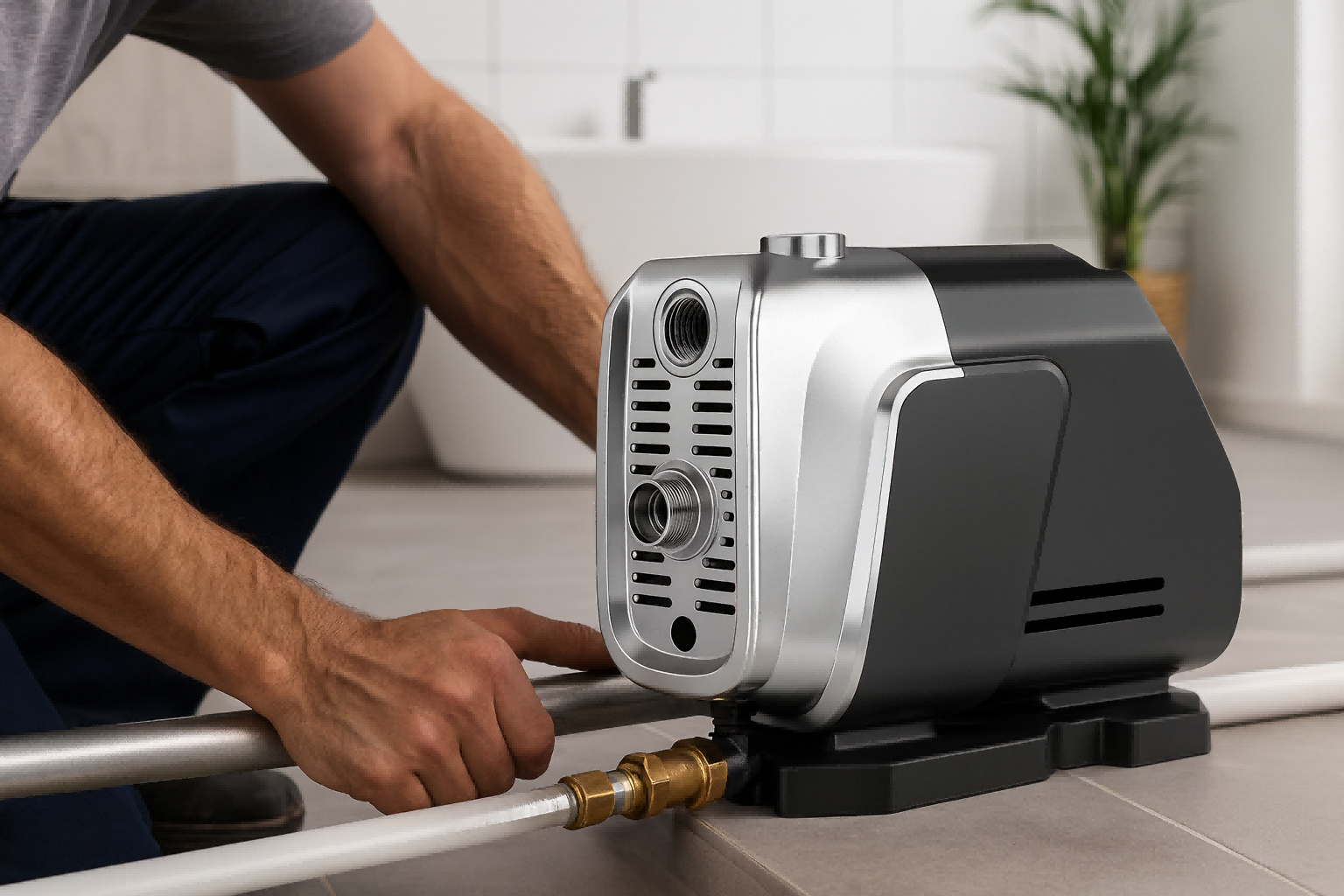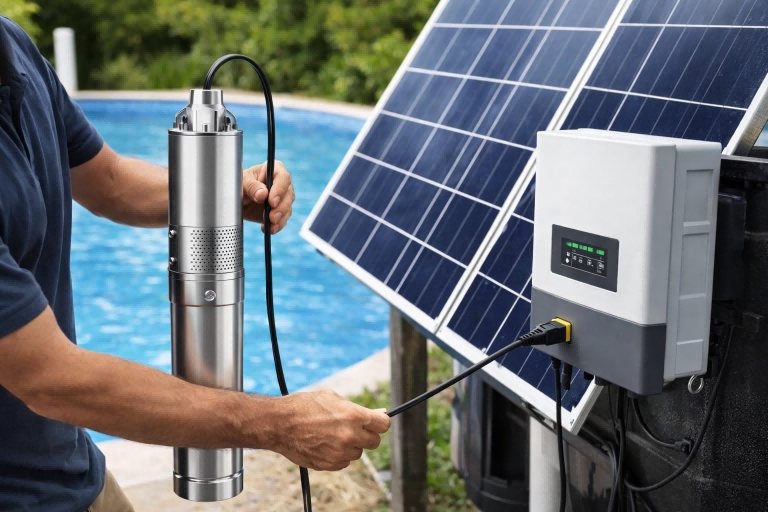Struggling with inconsistent fluid transfer?
High operational costs and frequent maintenance can cripple efficiency.
A centrifugal pump provides a simple, reliable, and cost-effective solution for your needs.
The single biggest advantage of a centrifugal pump is its elegant simplicity in both design and operation.
This simplicity directly translates to higher reliability, lower initial purchase costs, and significantly reduced maintenance needs, making it a superior choice for efficiently moving large volumes of low-viscosity fluids.

This core benefit of simplicity creates a ripple effect of advantages.
It impacts everything from the upfront investment to the long-term operational budget.
Understanding how this one feature influences performance, cost, and reliability is key to making an informed decision for your business.
Let's explore these interconnected benefits in more detail.
Unpacking the Simplicity: Why Design Matters
Are complex pumping systems causing costly downtime?
Intricate parts mean more potential failures and specialized, expensive repairs.
The straightforward design of a centrifugal pump minimizes these risks, ensuring smoother operations.
The key design advantage is its minimal number of moving parts, typically just the impeller and shaft.
This streamlined construction reduces friction, wear, and the number of potential failure points, leading to exceptionally high operational reliability and a longer service life.
The design philosophy behind a centrifugal pump is elegantly simple.
It avoids the complex gears, valves, or diaphragms found in other pump types.
This has profound implications for anyone who purchases, installs, or maintains these machines.
Let's break down how this structural simplicity benefits your operations.
The Core Components
At its heart, a centrifugal pump is incredibly straightforward.
It consists of a pump casing (the volute) and a rotating impeller.
Fluid enters the pump near the center of the rotating impeller.
The impeller's vanes catch the fluid and spin it outwards using centrifugal force.
This action increases the fluid's velocity.
As the fluid exits the impeller, it enters the volute.
The volute is a specially shaped chamber that widens towards the discharge outlet.
This widening forces the high-velocity fluid to slow down.
According to Bernoulli's principle, this decrease in velocity results in an increase in pressure.
This pressurized fluid then flows out of the discharge port.
There are no reciprocating parts, no complex valves opening and closing.
It is a smooth, continuous process.
Advantages of Fewer Moving Parts
Fewer parts directly translate to fewer problems.
This principle is a cornerstone of reliable mechanical design.
Every additional component in a machine is another potential point of failure.
By minimizing these points, centrifugal pumps achieve a remarkable level of durability.
| Component Count Comparison | Centrifugal Pump | Reciprocating Positive Displacement Pump |
|---|---|---|
| Primary Moving Parts | Impeller, Shaft | Piston, Crankshaft, Connecting Rod, Valves |
| Typical Failure Points | Seal, Bearing | Seals, Piston Rings, Valves, Bearings |
| Maintenance Complexity | Low | High |
| Specialized Tools Needed | Few | Many |
This table clearly shows the difference in complexity.
For a business owner or distributor, this means less time and money spent on maintenance.
Your customers experience less downtime, which builds confidence in your brand.
It also simplifies your inventory for spare parts.
You primarily need to stock common items like seals and bearings, not a wide array of pistons, valves, and rods.
This lean approach to maintenance is a significant competitive advantage.
High Efficiency and Performance: Moving More for Less
Are high energy bills cutting into your profits?
Inefficient pumps waste electricity, directly impacting your bottom line with every hour of operation.
Centrifugal pumps, especially modern VSD models, offer exceptional efficiency for high-flow applications.
A major performance advantage is their ability to deliver a smooth, non-pulsating flow at high rates.
This makes them ideal for transfer applications. When paired with a Variable Speed Drive (VSD), they can adjust motor speed to match demand, slashing energy consumption by up to 50%.
The performance of a centrifugal pump is defined by its ability to move large volumes of fluid effectively.
Its design is inherently suited for high flow rates, which is a requirement in countless applications.
However, true performance in the modern market is not just about raw power; it's about intelligent, efficient power.
This is where advancements like VSD technology have revolutionized what these pumps can achieve.
Let's dive deeper into their performance characteristics and the impact of smart technology.
Understanding the Pump Performance Curve
Every centrifugal pump has a performance curve.
This graph shows the relationship between flow rate (capacity) and head (the height the pump can lift the fluid).
It also typically shows the pump's efficiency and power consumption across its operating range.
The point of highest efficiency on this curve is known as the Best Efficiency Point (BEP).
Operating the pump at or near its BEP is crucial for maximizing performance and minimizing energy waste.
- Flow Rate (Q): The volume of liquid the pump can move per unit of time.
- Head (H): The pressure the pump can generate, expressed as the height of a column of water.
- Efficiency (η): The ratio of the power delivered to the fluid versus the power supplied to the pump shaft.
- Brake Horsepower (BHP): The actual power required from the motor to drive the pump.
Choosing the right pump involves matching its BEP with the system's normal operating requirements.
A mismatch leads to inefficiency, increased vibration, and potential damage to the pump over time.
The VSD and Smart Pump Revolution
Traditional centrifugal pumps run at a single, fixed speed.
This means they are always running at 100% power, even when the system demand is much lower.
This is like driving your car with the accelerator pushed to the floor and using the brake to control your speed.
It's incredibly wasteful.
A Variable Speed Drive (VSD), also known as a variable frequency drive (VFD), changes this equation completely.
A VSD acts as an intelligent controller for the pump's electric motor.
It adjusts the motor's rotational speed in real-time based on the system's actual demand.
How VSD Technology Delivers Savings
The relationship between pump speed, flow, and power is governed by the Pump Affinity Laws.
These laws show the dramatic impact of reducing pump speed.
| Parameter | Relationship to Speed (N) | Example: Reducing Speed by 20% (to 0.8N) |
|---|---|---|
| Flow (Q) | Proportional to Speed (N) | Flow reduces to 80% |
| Head (H) | Proportional to Speed Squared (N²) | Head reduces to 64% (0.8²) |
| Power (P) | Proportional to Speed Cubed (N³) | Power reduces to 51.2% (0.8³) |
As you can see, a small reduction in speed leads to a massive reduction in power consumption.
A 20% speed reduction cuts power usage by nearly half.
This is the source of the significant energy savings that smart VSD pumps provide.
For applications with fluctuating demand, like residential water supply or HVAC systems, the savings are substantial.
This technology allows one pump to do the work of several smaller pumps, maintaining constant pressure while only using the exact amount of energy needed at any given moment.
Versatility in Application: One Design, Many Solutions
Is finding the right pump for each specific job a constant challenge?
Stocking a wide variety of pump types is expensive and complicates inventory management.
The adaptable nature of centrifugal pumps allows them to cover a vast range of industrial and commercial applications.
The incredible versatility of centrifugal pumps is a huge advantage for distributors and end-users alike.
From small domestic booster pumps to massive industrial systems, the same basic principle can be scaled and adapted to handle different fluids, pressures, and flow rates with high reliability.
The fundamental design of a centrifugal pump is remarkably scalable.
This scalability means the core technology can be applied to an enormous spectrum of tasks.
Whether you need to boost water pressure in a single-family home or transfer chemicals in a large processing plant, there is a centrifugal pump designed for the job.
This versatility simplifies sourcing, sales, and support for distributors.
Let's explore the breadth of their applications and the factors that enable this adaptability.
Range of Applications
The sheer number of uses for centrifugal pumps is a testament to their flexible design.
You can find them in nearly every sector of the economy.
- Residential: Water supply, booster systems, swimming pool circulation, and garden irrigation.
- Commercial: HVAC systems for heating and cooling, fire suppression systems, and pressure boosting in large buildings.
- Industrial: Chemical processing, oil and gas transfer, food and beverage production, and wastewater management.
- Agricultural: Large-scale irrigation, water transfer from sources like rivers or wells, and distribution of fertilizers.
- Municipal: Public water supply and distribution networks, and sewage treatment plants.
This wide range of uses means that as a distributor, you can serve multiple market segments with a single core product line.
It allows you to build expertise in a technology that has broad customer appeal.
Factors Enabling Versatility
Several key factors allow the basic centrifugal design to be adapted for so many different jobs.
Understanding these allows you to select the perfect pump configuration for your customer's specific needs.
Material Construction
The materials used to build the pump are critical.
The choice of material depends entirely on the fluid being pumped.
| Material | Common Applications | Key Properties |
|---|---|---|
| Cast Iron | General water service, non-corrosive fluids | Low cost, good strength |
| Bronze | Saltwater (marine), brackish water | Good corrosion resistance |
| Stainless Steel | Potable water, food/beverage, chemicals | Excellent corrosion resistance, hygienic |
| Specialty Alloys | Highly corrosive acids, abrasive slurries | Extreme resistance to chemical attack and wear |
| Plastics/Polymers | Aggressive chemicals, metal-sensitive fluids | Total corrosion immunity, lower strength/temp limits |
Offering pumps in various materials a key to serving diverse industrial markets.
Impeller Design
The impeller is the heart of the pump, and its design has a huge impact on performance.
- Open Impeller: Has vanes attached to a central hub but no side walls (shrouds). It is best for handling fluids with suspended solids, like wastewater or slurries, as it is less likely to clog. It is generally less efficient.
- Semi-Open Impeller: Has a back wall (shroud) that adds mechanical strength. It maintains some ability to handle solids while offering better efficiency than an open design.
- Closed Impeller: Has shrouds on both sides of the vanes, enclosing the waterway. This is the most common and most efficient design, but it is best used for clear, low-viscosity liquids as it can clog easily.
Matching the impeller type to the application is crucial for reliable operation.
Pump Configuration
Centrifugal pumps come in many physical arrangements to suit different installation requirements.
This includes horizontal pumps, vertical in-line pumps, and submersible pumps.
Multi-stage pumps use several impellers in series to generate extremely high pressures, ideal for applications like boiler feed water or supplying water to high-rise buildings.
This adaptability in form and function makes the centrifugal pump a true workhorse across industries.
Cost-Effectiveness: A Smart Long-Term Investment
Are you focused on providing value that goes beyond the initial price tag?
A low upfront cost can be tempting, but high running and maintenance costs can erase those savings.
Centrifugal pumps deliver an excellent return on investment through a combination of low purchase price, minimal maintenance, and high operational efficiency.
The primary cost advantage lies in its low Total Cost of Ownership (TCO).
While the initial purchase price is often very competitive, the real savings come from reduced maintenance expenses and, with VSD models, significantly lower energy bills over the pump's entire lifespan.
For a savvy business owner like your typical customer, the purchase price is just one part of the equation.
The Total Cost of Ownership is the true measure of a product's value.
It includes the initial capital expense, but also the ongoing costs of energy, maintenance, spare parts, and downtime.
Centrifugal pumps excel when measured by this comprehensive metric.
Let's break down the components of TCO to see where these pumps create value.
Analyzing the Total Cost of Ownership (TCO)
The TCO of a pump can be broken down into several key areas.
Centrifugal pumps offer advantages in almost every category.
Initial Purchase Price (Capital Expense)
Due to their simple design and high production volumes, standard centrifugal pumps are among the most affordable pump types on the market.
Fewer complex, precision-machined parts mean lower manufacturing costs.
This benefit is passed on to you as the distributor and, ultimately, to the end user.
This makes them an accessible choice for a wide range of budgets and projects.
Installation Costs
Their straightforward design often simplifies the installation process.
They are generally more compact than other pump types of similar capacity.
They provide a smooth flow, which reduces the need for expensive pulsation dampeners in the piping system.
This can lead to faster, easier, and less costly installations.
Energy Costs
This is often the largest single component of a pump's TCO, sometimes accounting for over 80% of its lifetime cost.
As discussed, the efficiency of centrifugal pumps is already high, especially when operated near their BEP.
When you add the intelligence of a Variable Speed Drive (VSD), the energy savings become transformative.
The ability to precisely match output to demand minimizes wasted electricity, leading to direct and substantial reductions in operating expenses.
For any client focused on operational efficiency and sustainability, a VSD centrifugal pump is an extremely compelling proposition.
Maintenance and Repair Costs
This is another area where simplicity pays dividends.
- Fewer Wear Parts: The primary wear items are the mechanical seal and the bearings. These are standard, relatively inexpensive components.
- Easier Maintenance: Routine checks are simple. Servicing the pump is typically straightforward and doesn't require highly specialized labor or tools.
- High Reliability: The robust, simple design leads to longer intervals between maintenance, meaning less spending on parts and labor, and more importantly, less costly operational downtime.
The chart below illustrates a typical TCO breakdown for a standard pump versus a VSD-equipped, energy-efficient model.
| Cost Component | Standard Fixed-Speed Pump | High-Efficiency VSD Pump |
|---|---|---|
| Initial Cost | 10% | 15% |
| Installation | 5% | 5% |
| Energy | 75% | 40% |
| Maintenance | 10% | 5% |
| Downtime | (Variable high cost) | (Variable low cost) |
While the initial cost of a VSD pump is higher, the massive reduction in energy and maintenance costs provides a rapid return on investment and a much lower TCO over the long term.
This is a powerful argument for quality-focused buyers.
Conclusion
The major advantage of a centrifugal pump is its simplicity.
This single trait leads to unmatched reliability, cost-effectiveness, and versatility, making it the top choice for countless fluid transfer applications globally.
FAQs
What are the three main advantages of a centrifugal pump?
The three main advantages are its simple design leading to high reliability, its lower initial and maintenance costs, and its ability to provide a smooth, high-volume flow.
What is the main disadvantage of a centrifugal pump?
The main disadvantage is its inability to handle highly viscous fluids efficiently. It also is not self-priming and requires the pump casing to be filled with liquid before startup.
Why are centrifugal pumps so common?
They are common because their blend of simplicity, reliability, cost-effectiveness, and efficiency makes them the best choice for the most frequent pumping task: moving large volumes of low-viscosity fluids like water.
What are centrifugal pumps best for?
Centrifugal pumps are best for high-flow, low-pressure applications involving low-viscosity liquids. They excel at water transfer, circulation, and pressure boosting in residential, commercial, and industrial settings.
Can a centrifugal pump run dry?
No, a centrifugal pump should never be run dry. Operating without liquid will cause the mechanical seal to overheat and fail quickly, leading to significant pump damage.
How do you increase the efficiency of a centrifugal pump?
Efficiency can be increased by ensuring the pump is properly sized for the application, operating it near its Best Efficiency Point (BEP), and using a Variable Speed Drive (VSD) to match its output to system demand.
What is the difference between a centrifugal pump and a positive displacement pump?
A centrifugal pump uses a rotating impeller to generate flow and pressure, with output varying with pressure. A positive displacement pump traps and moves a fixed volume of fluid, delivering a constant flow regardless of pressure.
Are centrifugal pumps good for creating high pressure?
Standard single-stage centrifugal pumps are not ideal for very high pressures. However, multi-stage centrifugal pumps, which use multiple impellers in series, are specifically designed to generate very high pressures effectively.








